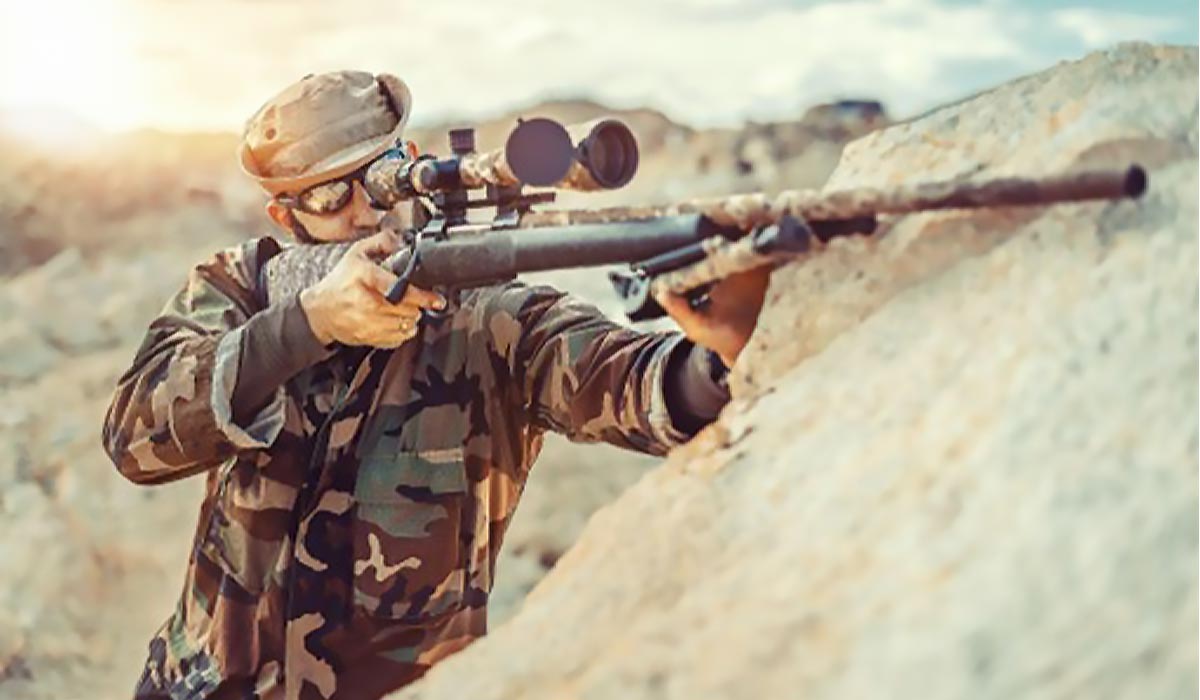What to Look for In a Rifle Scope: An Essential Guide for Hunters

Like military snipers, a hunter is armed not just with arrows or bullets but with patience, determination, a keen sense of smell, and a good eye and steady hands.
A hunter’s kit should complement their desire to hit their target. This means using the right ammunition, the right baits and monitoring equipment, and the right scope to hit their target from far away.
Let’s go over what an excellent hunter needs to consider when choosing a sniper scope and how to make the best shot possible with their chosen equipment.
A Hunter’s Basic Kit
Every hunter approaches the activity differently. Stealthy hunters might hunt with a bow. Hunters who aren’t as mobile may set up a sniping position among the trees.
However, there are a few basic pieces of kit that every hunter should have:
● A Weapon and Accurate Scope + Sight
For hitting your target and killing it instantly
● A Sharp Pocket Knife
For cutting into your target/creating natural camouflage
● Camouflage Clothes (and A Reflective Vest for Safety)
For blending in with the surroundings
● Boots
For wading into mud and water and protecting your feet
● Scent Killer
For blending in and hiding from strong-nosed animals
● Decoys and Calls
For attracting Targets
● Trail Cameras and Traps
For tracking and corralling targets
● Rain Gear like Ponchos and Tents
For building observation posts and not getting bogged down by the weather
This is not an exhaustive list. There are plenty of other tools that individual snipers swear by.
Regardless of stomping ground or game type, every hunter can benefit from having these materials and will find these indispensable on the hunt.
Factors to Look for When Choosing A Scope
With such a wide range of scopes available on the market, it’s a doozy to choose which scope works best for your needs.
Here is a quick overview of the different factors to consider when choosing a rifle scope, as well as which ones may suit your needs.
Magnification
Magnification is how close the target appears compared to your naked eye.
You will only need 1-4x magnification when hunting small game (short range). If you’re shooting up to 200 yards (medium-range), you will need 5-8x magnification.
Targets across open landscapes (long-range) will require 9-12x magnification.
Fixed vs. Variable Power
This is how much magnification your scope offers. A fixed scope only offers one magnification setting (2x, 4x, etc.), while a variable scope ranges (3-9x).
You will only need fixed power if you only engage at a set distance. However, variable power offers more flexibility and range.
Objective Lens
This lens allows light to filter through and project into your eyes, allowing you to see your target. The larger your lens is, the more light is transmitted.
A close-range scope only needs a 28 mm lens. A more high-powered scope should have 30-44mm. You will need 50mm lenses for long-range scopes.
Lens Coating
This coating reduces glare and enhances your sight.
All scopes are coated at least once, and plenty are fully multi-coated (all lenses have multiple coats). Having a good scope reticle is more important when it comes to accuracy.Field of View
This is how much you can see horizontally across your scope. The wider your field of view is, the less magnified you are. As you zoom in, your view narrows.
When you zoom in, your field of view should never be obstructed by black corners (called tunneling).

Scope Reticle
This is the crosshair that determines your point of aim. The center of the two intersecting lines is where your target should be. The most common reticles are:
● Duplex: Simple crosshair pattern with no notches. Perfect for hunting
● Mil-Dot: Dots on crosshair indicate distance. Perfect for military & law enforcement
● BDC: reticle accounts for bullet drops for long-range shooters
Choose the one that suits your engagement distance and shooting style. When it comes to hunting, the simplest option is often the best.
Focal Plane
This affects the magnification of your reticle. The first focal plane (FFP) reticles zoom in as you magnify, while the second focal plane (SFP) reticles stay consistent as you zoom in.
SFP reticles are simpler and more consistent, making them better for hunters. FFP reticles are for faster-paced tactical situations.
MOA vs. MRAD
Minute Of Angle (MOA) and Milliradian (MRAD) are measurements of accuracy measuring 1” and 0.36” per 100 yards, respectively. MOA is more commonly used among American hunters.
Windage and Elevation Turrets
The side and top knobs (respectively) of your scope allow you to account for how environmental factors affect your shot. They account for wind speeds and bullet drop.
Your turret knobs should produce an audible click and be easy and smooth to adjust. They must also allow you to cycle through measurements while being able to replicate your adjustments.
Eye Relief
This is the distance between your eye and the rear lens. This protects you from eye strain and even from getting punched by your scope due to recoil.
Be sure to have 3-4 inches of eye relief. This allows you to get a wide field of view, preventing scope tunneling and blurriness.
Parallax
Some scopes have a third turret for adjusting parallax, the reticle floating when you adjust your head. This can lead to missed shots and a need to zero your scope.
However, most scopes are already factory-set to prevent it. It shouldn’t be a big deal.
Conclusion
The choice of which rifle scope to choose will depend on your personal preferences, what kind of animal you hunt, and where you go on the prowl.
It will depend on what works best for your eyes, your engagement distances, your price range, and how long you plan on staring down the scope.
A good sniper scope should help you line up your shot and make it, killing your target quickly and humanely. It should work for you and help you become the best hunter you can be.


1 comment
I use the Vortex “Diamondback” on both of my rifles.The crosshairs are marked in both directions,